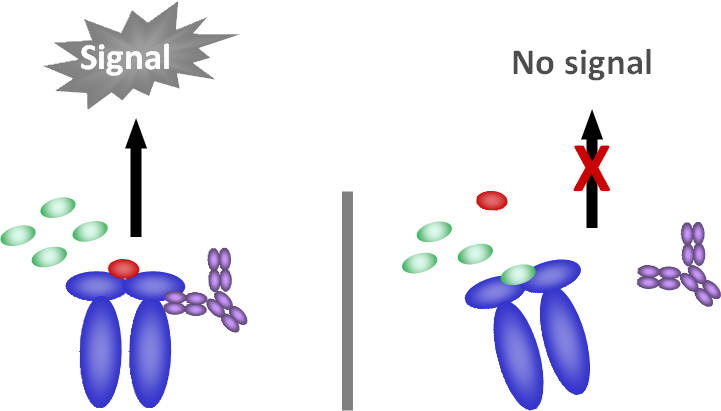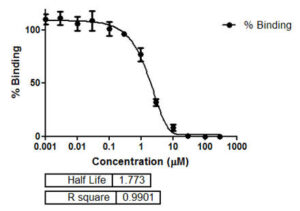Your basket is currently empty!
HLA Class II Competition Assay
ProImmune REVEAL® MHC-Peptide
Competition Binding Assays

How Strong is Your Competitor?
There are situations when you need to evaluate MHC-binding of peptides not just on its own but how a peptide or peptide-mimetic competes with a known control peptide for binding.
As an extension to our regular ProImmune REVEAL® MHC-peptide binding and rate assays we are now also offering MHC-peptide competition binding assays.
These new assays are currently available for the following HLA-DR supertypes:
HLA-DRB1*01:01, *03:01, *04:01, *04:05, *07:01, *09:01, *11:01, *15:01.
Like our other specialist assays our competition assays turn around rapidly in only a few weeks.
ProImmune REVEAL® Competition Assay Principle

Figure 1. Competition assay principle: A labelled control peptide is bound to the MHC-complex, giving a high baseline signal in an immunoassay. As the peptide is competed away with unlabelled competitor peptide the signal reduces at increasing concentration of competitor peptide. The control peptide is usually a well known HLA-Class II restricted immunodominant T cell epitope which is further known to be restricted to the HLA-DR supertype of interest.
 |
Figure 2. Example data for the assay. Half-life is determined using 12 competitor concentrations and single time constant off rate curve. |
Additional Features:
![]() Control peptides can be chosen depending on the assay objective
Control peptides can be chosen depending on the assay objective
![]() Test peptide or compounds provided by customer or made by ProImmune
Test peptide or compounds provided by customer or made by ProImmune
![]() The concentration range can be varied to suit the specific project objective
The concentration range can be varied to suit the specific project objective
![]() Mixtures of peptides as well as mono-disperse peptides can be tested
Mixtures of peptides as well as mono-disperse peptides can be tested
Key Publication for the Competition Assay:
Jansson L., Wraith D., et al. (2018). “Immunotherapy With Apitopes Blocks the Immune Response to TSH Receptor in HLA-DR Transgenic Mice” Endocrinology, Volume 159, Issue 9, Sep., pp 3446–3457
https://doi.org/10.1210/en.2018-00306
